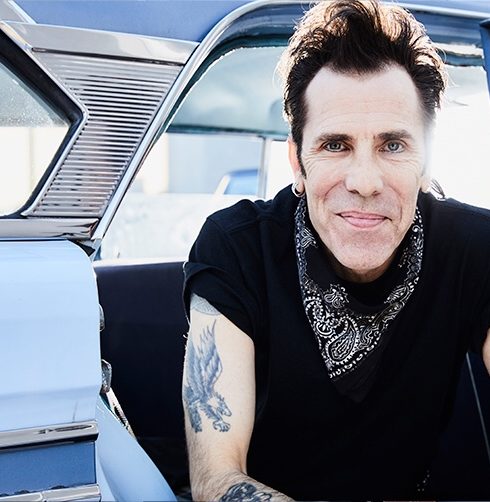The Butterfly Mistake The Implosion of the population bomb by Howard Bloom
When we left off in our last exciting episode, you had started a PR firm in a field you know nothing about—rock music. It was what you hope it would be—a tiny window into the forces of history. You helped champion subcultures using music to assert their right to exist—from a Southern community trying to break out of the ghetto of the Bible Belt with country crossover; a Texas culture trying to express its dignity through the music of ZZ Top; the gay community seeking to liberate itself through its chosen music, disco; to the white middle class rebellions of heavy metal and punk, and two musical forms that the black community was using to assert its identity—rap and the sort of black crossover manifested in two of your clients, Prince and Michael Jackson. You were asked to help expand the visibility of Amnesty International in North America. You were asked to kick off Farm Aid. You work with the Black United Fund, the United Negro College Fund, and the NAACP. You were named Ambassador of Texas Culture to the World by the mayor of Houston and the unofficial musical spokesman of the gay community in New York City in the same month, despite the fact that you were neither Texan nor gay. Insiders let you into their communities. They let you see firsthand how their subcultures had distinct worldviews, distinct ways of interpreting the world. And they let you see how they became true believers, and how they sometimes payed no attention when the belief systems of their subculture make predictions that proved to be wrong. Wrong as wrong can be.
That’s what happened when you were let into the eco-community. One of the musicians you worked with was a founding father of New Age Music, Paul Winter. And New Age Music was the pop expression of ecological thinking. Paul Winter was marvelous. He was a saxophonist who dueted with wolves and whales. And he was deeply committed to bettering the world. He was deeply committed to “saving the planet.” Your commitment was to help him get his belief system across. But there was a problem. In 1978, Paul told you point blank that all the whales in the sea would be gone within two years. Off the planet. Out of the oceans. Disappeared. Extinct. Again, that was in 1978. If Paul’s prediction was on target, there would be no whales left outside of Sea World by 1980. And Paul’s information came from some of the greatest ecological activists on the planet. Yet there would actually be an estimated 1.7 million whales still swimming the oceans in 2020.[i] Something was not right.
Paul spoke on behalf of an eco-community. A community dedicated to predictions of apocalypse. And there was apparently something askew with that community’s claims.
***
In 2013, you have friends who promote more modern updates of Paul Winter’s point of view: Dorion Sagan, son of Carl Sagan and of National-Medal-of-Science-winning biologist Lynn Margulis, and a terrific science writer with at least 20 books to his credit; Don Davis, one of the leading space artists in the world, the man behind some of NASA’S most iconic space paintings; and Daniel Pinchbeck, author of Breaking Open the Head, founder of Reality Sandwich, and creator of an impressive psychedelic and ecological community. All of these friends are convinced of a somber truth with dark implications—the earth is vastly overpopulated and we are on the path to the end. We have doomed the planet. And we have doomed ourselves.
This is a very strange point of view. Why? Because it has a track record. And that track record is one of failure. Total, outright failure.
Here’s the world view that has infected us like a cancer since 1970 as described by Yale’s Paul Sabin in his book The Bet:
In June 1974, Paul Ehrlich and his close friend John Holdren flew from California to Washington, DC, to testify before Congress. … “A new era in the world” was coming, Ehrlich said, taking people from an “age of abundance to an age of scarcity.” Within a decade, food and water would become difficult to obtain and expensive, resulting in a billion or more people starving to death. …Holdren insisted that ecosystems could not be maintained by artificial means. No “technological equivalent” existed for natural ecosystems. Humans could not run Earth like an “Apollo capsule,” he said, referring to the space program. He saw “unwarranted technological optimism” as the “most dangerous tendency” facing society. Ehrlich and Holdren spoke freely and easily of a “no-growth” society and “de-development.” the coming period of austerity. …the Ehrlichs considered the American model simply doomed. “We are facing, within the next three decades, the disintegration of an unstable world of nation-states infected with growthmania,” the Ehrlichs?? wrote. “The game of unlimited growth is ending, like it or not. We are approaching the limits.” The Ehrlichs argued, in their typical rhetorical style, that society should make voluntary changes today to avoid having future changes imposed by catastrophe.[ii]
A billion people would die by 2004. That was Ehrlich’s prediction. But has it come true? Did the human population of the planet decrease by a billion in the early 2000s? No, the population increased. The human population jumped by almost four billion between 1974 and 2021.[iii] It more than doubled. Yet Ehrlich’s views way back in the 1970s gave birth to the popular notion that humans are a cancer on the earth. A cancer? Isn’t that the rhetoric of irrationality and the language of fear, not the language of discourse and debate? Yes. But is it merited?
There was a problem with Ehrlich and Holdren’s dire pronouncements. Both men were scientists. Holdren, in fact, went on to become Assistant to the President for Science and Technology, Director of the White House Office of Science and Technology Policy, and Co-Chair of the President’s Council of Advisors on Science and Technology under president Barack Obama.[iv] Above all other people, scientists know the nature of nature. Don’t they? When Holdren talks about “fundamental ecological limits,” he is not just talking off the top of his hat. He is talking about an inescapable reality. He is talking about conclusions derived from data. Mountains of data. Data acquired painstakingly over more than two hundred years of modern scientific pursuit. He is talking about conclusions drawn not from opinion, but from the facts. Drawn dispassionately. With detachment. By men whose lack of bias, whose objectivity, is one of their primary disciplines. Right? Wrong.
In science, you test your hypotheses. You make predictions. Einstein, for example, derived eight predictions from his theory of relativity in the early 20th century. If those predictions had proven false, his theory would have gone out the window. In science, if your predictions fail, you abandon your guesses and look for new ones. Ehrlich and Holdren’s predictions failed. Big time. The pair told Congress that we would run out of resources, hit the wall, and plunge into mass starvation before 1990. A billion people would die. And the “catastrophe” of starvation and resource drought would begin in the 1980s. But guess what? The catastrophe never arrived. People in the 1980s and 1990s were better fed, richer, longer-living, and less subject to poverty than they had been in the 1960s and 1970s when Holdren and Ehrlich had made their predictions. But Holdren and Ehrlich never gave up their hypothesis. In fact, they ceased regarding it as an educated guess and came to see it as a fundamental reality. That’s not science. It’s faith. It’s religion.
How did two intelligent men with impeccable scientific credentials go so wrong?
The nature Holdren and Ehrlich talked about does not exist. Why? They ignored the big picture. They ignored the real evidence on nature that has emerged since Erasmus Darwin first published an evolutionary overview of the cosmos and of life in 1795.They ignored the timeline. And they failed to observe the second law of science: look at things right under your nose as if you’ve never seen them before, then proceed from there. Look at the evidence.
Ehrlich looked at too little of the evidence. He looked at only one thing, the creatures he’d been obsessed with since he was a kid in Maplewood, New Jersey. He looked at butterflies. Butterflies go through boom and crash. As Paul Sabin put it in The Bet, a book on Ehrlich,
Butterflies existed in tenuous balance with available resources and external threats from predators and disease. No gentle “balance of nature” stabilized butterfly populations. Rather, booming and crashing population cycles characterized all animal species. Populations that grew beyond a certain threshold were brought down by resource shortages, disease, and other population-dependent factors. “The shape of the population-growth curve is one familiar to the biologist,” Ehrlich wrote in a 1969 essay on human overpopulation entitled “Eco-Catastrophe.” “It is the outbreak part of an outbreak-crash sequence. A population grows rapidly in the presence of abundant resources, finally runs out of food or some other necessity, and crashes to a low level or extinction.”[v]
Extending the example of the butterfly to human history was a big mistake. Why? It ignored something right under Ehrlich’s nose. The big picture. The history of the cosmos that had been pieced together by over 200 years of research. The history Emanuel Kant and Erasmus Darwin had each foreshadowed when, separately, they’d each imagined the beginning of the cosmos in an explosion, a big bang.
And Ehrlich ignored a lesson from that history. The ultimate resource is inventiveness. And inventiveness turns poisons into pistons and wastelands into seas of waving grain. Inventiveness creates new resources. Yes, inventiveness creates resources. Inventiveness turns nightmares and nothings into abundance. Ehrlich imagined that life forms reach the “carrying capacity” of their environments, then crash. Crash and disappear. But his butterflies have been around for forty million years and have not disappeared. Some have proven so astonishingly inventive that they’ve figured out a way to feast on milkweed in Canada, then to outfox the climate change of summer, fall, winter, and spring by wintering in Mexico. That’s a vast navigational feat. And it is a solution to the problem of climate change, a solution to the problem of winter that goes way, way outside the box. Three thousand miles outside the box. Monarch butterflies have pulled this off without the use of satellite photos to check out the landscape, to measure the resources of Ottawa and Mexico, and to plot a route. The monarch butterfly’s migration is invention beyond belief. Invention by creatures with a brain the size of a thread. And invention has existed since the universe began.
Newton portrayed God as the great contriver, the great maker of machines. But evolution is more. She is the great inventor. The great tinkerer. The great breakthrough maker. The great creator of explosive innovations. Innovations that change the nature of the game. Innovations that change the very template of nature itself.
And, like butterflies, we are now among evolution’s tools. Tools for what? Tinkering, inventing, innovating, changing the very nature of nature’s game.
Ehrlich and Holdren overlooked the big picture of butterflies. And what shows up when you look at the big picture? Breakthroughs. The inventive capacities of a self-upgrading universe. The confabulating ability of a cosmos that constantly reinvents herself. The inventive compulsion of a universe that rejiggers the very nature of nature. And that does it constantly.
______Howard Bloom, the author of seven books, has been called the Einstein, Darwin, Newton and Freud of the 21st century by Britain’s Channel 4 TV. The Office of the Secretary of Defense threw a symposium on Bloom’s book, Global Brain, and brought in representatives from the State Department, the Energy Department, DARPA, IB
[i] https://www.reference.com/pets-animals/many-whales-left-world-8ace26362b9893eb, https://iwc.int/status
[ii]Sabin, Paul (2013-09-03). The Bet (pp. 96-99). Yale University Press. Kindle Edition.
[iii] population of earth 1972 3.837 billion. today (05-07-2021) 7.674 billion
[iv] https://obamawhitehouse.archives.gov/administration/eop/ostp/about/leadershipstaff/director
[v] Sabin, Paul (2013-09-03). The Bet (pp. 26-27). Yale University Press. Kindle Edition.










